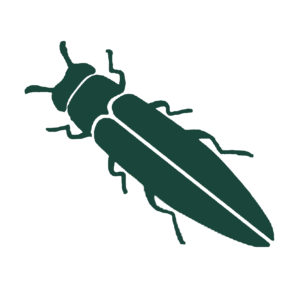
Since 2002, parks departments across the United States have been engaged in a battle against an elusive foe: the emerald ash borer. The insect, whose native range extends across temperate forests in east Asia, was unintentionally introduced to the U.S. state of Michigan 16 years ago. The borer resides in and consumes ash trees, progressively doing enough damage to topple the trees. The bug most likely came to North America on wooden shipping materials like pallets, and, since the species has no natural predators in the United States, emerald ash borers have spread to more than 29 states. Their rapid expansion in the U.S. has been helped along by humans, who unwittingly aid their migration by transporting firewood contaminated with the bugs, their eggs or their larvae. Iowa is officially a quarantine state when it comes to the emerald ash borer, and it is against the law to move firewood across the state border, although it can be moved within the state.
The ban, though, is as much to keep the bugs in as to keep them out. According to Kory Kinnick, a park ranger at Rock Creek State Park, the emerald ash borer has been “physically discovered” in “roughly fifty counties out of ninety-nine in the state of Iowa.”
Even if bugs have not been physically discovered in a given county, a threat may still exist.
Poweshiek County is not immune to the spread of this invasive insect. At Rock Creek State Park, located just seven miles west of Grinnell College, no specimens of the beetle have been found. However, the signatures of the bugs presence, such as the holes left by woodpeckers hunting for larvae have be seen.
In light of these signature markings, the park has been forced to remove all ash trees. Kinnick said that this step was mandated by state policy: “Any tree that is in an area where people are going to recreate must come down.”
The emerald ash borer eats away at the inside of ash trees, eventually rendering them brittle and liable to snap off during stormy, windy weather. This creates a risk to human life, as trees can fall on trails, in campgrounds or in electrical areas.
To make matters worse, ash trees are common in Rock Creek State Park. Kinnick explained that Rock Creek was established after an epidemic of Dutch Elm disease wiped out other species, and that ash trees became “that go-to bulletproof tree, and they planted a lot of them.”
By Kinnick’s count, there are less than 50 ash trees still standing. This summer will see a thinning of those trees, and the rest of them should be down by next winter.
“It’s disheartening,” Kinnick said. “We see a lot of magnificently beautiful ash trees out at the Rock Creek State Park campgrounds, but we can’t risk a life versus a tree.”
The trees that are felled will not go to waste. They can be salvaged for firewood — provided it does not leave Iowa.

































































